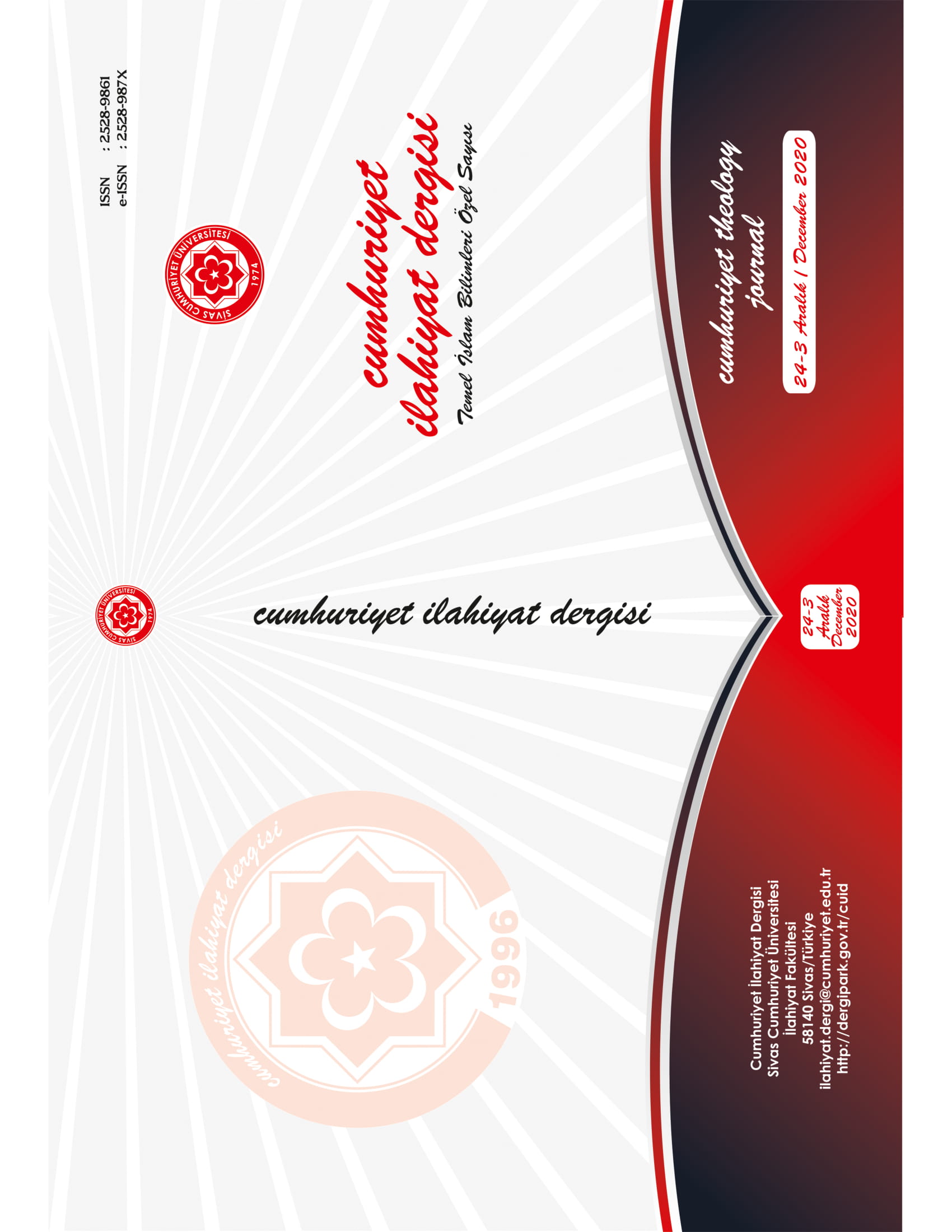Kur’ân Metninin Modern Arap Yazısındaki Noktalama İşaretleri İle Yazımı
Writing the Text of the Qurʾān with Punctuation Marks in Modern Arabic Inscription
Author(s): Hasan YücelSubject(s): Language studies, Language and Literature Studies, Theology and Religion, Islam studies
Published by: Cumhuriyet Üniversitesi İlahyat Fakültesi
Keywords: Tafsīr; the Qurʾān; al-Waqf and al-Ibtidāʾ; Waqf Marks; al-Sajawāndī; Arabic; Punctuation Marks;
Summary/Abstract: Qurʾān was revealed to the Prophet Muḥammad (pbuh) not as a written document, but by word of mouth over a period of approximately 23 years. He dictated the verses to the scribes of revelation. After this, Abū Bakr compiled the written verses; i.e. gathered between two covers. Thus when the Qurʾān was compiled as a text, a number of addresses lost their characteristics. This situation, which is a result of the shortcomings in inscription, suggested the necessity of separating the verses, preserving the recitation method (waqf places) learned from Prophet and transmitting the Qurʾān towards new learners. As a result, the science of al-Waqf and al-Ibtidāʾ has emerged. The systematics of al-Sajāwandī was chosen among the people who systematized the waqfs marks and the mushafs that we have today are arranged according to the systematics of al-Sajāwandī. At this point, the issue of showing other addressing features of the Qurʾān, such as the emphasis, in text appeared as an area that to be considered. The aim of this study is to analyze this issue and to focus on the possibility and method of realizing the subject. If punctuation marks are to be added to the Qurʾānic text, this should be done by taking into account the characteristics of punctuation marks in Arabic. According to comparison between punctuation and wakf marks, it was seen that they have different characteristics. First difference is the systematic difference. Punctuation marks in modern Arabic script are divided into four groups: end marks, tone marks, quotation marks, and the signs used in mathematics. However, al-sajawānds consists of only end/stop marks. In this case, al-sajawānds do not function as punctuation marks indicating tone of voice/emphasis and quotations. The second difference is that punctuation marks are more about the meaning than waqf marks. Because waqf marks do not oblige reader to understand only one of the possible meanings. However, punctuation marks limit or even determine the meanings. In addition, waqf marks are also based on the recitation(s) of the Prophet/al-qirāʾat al-manqulah. Correct comprehension depends on correct reading. For correct reading, addressable features must be able to be incorporated into the text as much as possible. Today’s muṣḥaf, cannot show emotions, emphasis to the reader. Beside, each of the characteristics of waqf marks (al-waqf al-muʿānaqah ext.) cannot meet the end marks found in today’s punctuation marks. In this case, we can add emphasis marks to text in order to reflect the emphasis that are missing from them by keeping al-sajāwands. Likewise, the question of to where/whom the word belongs to, which may cause confusion in text, can be resolved with quotation marks. Hereby, it has been concluded that a pseudonym system that can reflect the emphasis features of the Qurʾān and show quotations, should be developed in addition to al-sajāwands. So, our proposal includes the following steps: keeping al-sajāwands existing in the muṣḥaf; placing the emphasis marks in today's punctuation marks, which will serve this function in places where the emphasis and tone of prayer’s voice cannot be reflected in writing; putting quotation marks. Thus, it will be possible to develop a system that can show the linguistic, grammatical, semantic, phonetic, emotional and reciprocity dimensions of address in the writing/text. In this context, the punctuation marks that we find useful to be added to the muṣḥaf are emphasis marks (:!؟) and some quotation marks («»: -). قَالَ فَمَنْ رَبُّكُمَا يَا مُوسٰى؟ قَالَ رَبُّنَا الَّذ۪ٓي اَعْطٰى كُلَّ شَيْءٍ خَلْقَهُ ثُمَّ هَدٰى. Tāhā 20/49-50 As an example, in this verse, there is a real question that is expected to be answered. Then a question mark can be put at the end of this sentence. In addition, a dot mark can be placed at the end of the answer sentence to indicate that the answer is concluded.
Journal: Cumhuriyet İlahiyat Dergisi
- Issue Year: 24/2020
- Issue No: 3
- Page Range: 1307-1331
- Page Count: 25
- Language: Turkish

